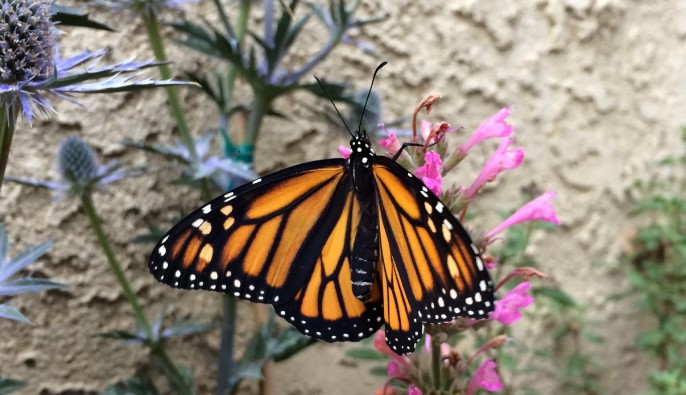
Monarch Butterfly Conservation
Western monarchs are in trouble. Preliminary results indicating a total of less than 2,000 migratory monarchs present in all of the overwintering sites in the state of California! The number of monarchs overwintering in coastal California has declined by over 99% since 1980s. (fws 2020)
Western Monarch Butterfly Population at all time low
This is the third year that we’ve made an effort to help by planting native host plants, nectar plants, and improved on the our enclosure design. Here are two enclosure designs that we’ve built so far to protect and monitor the growth of our different flying friends.
https://butterflyguardian.com
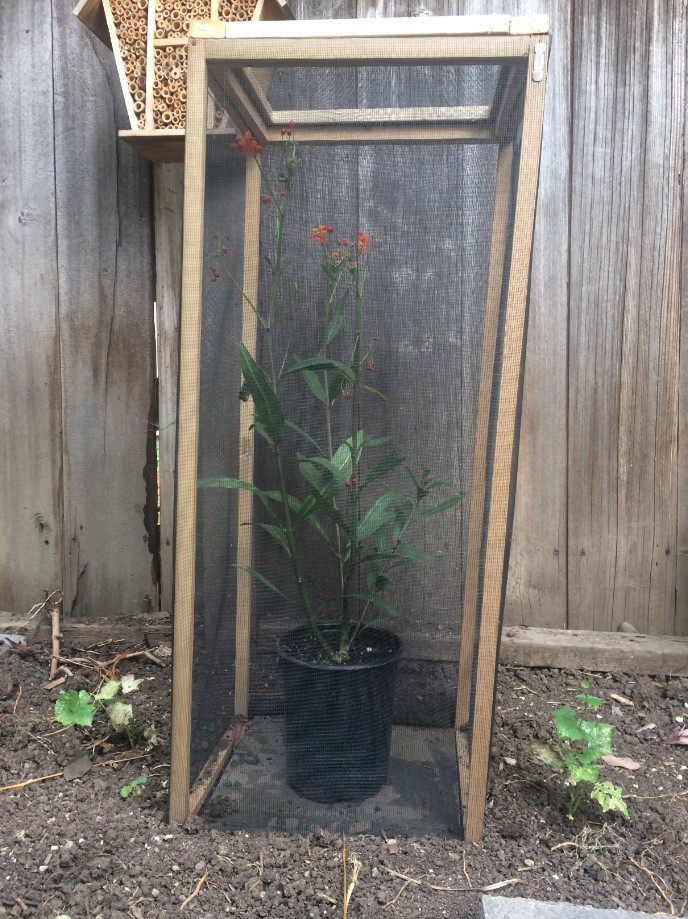
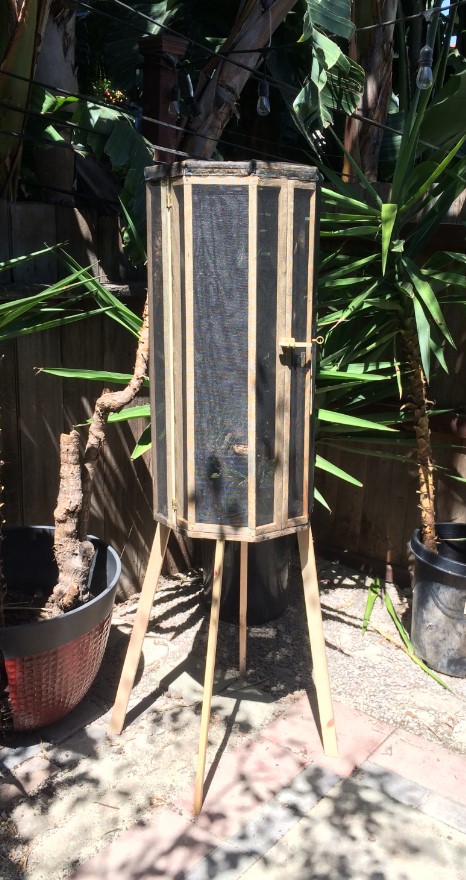
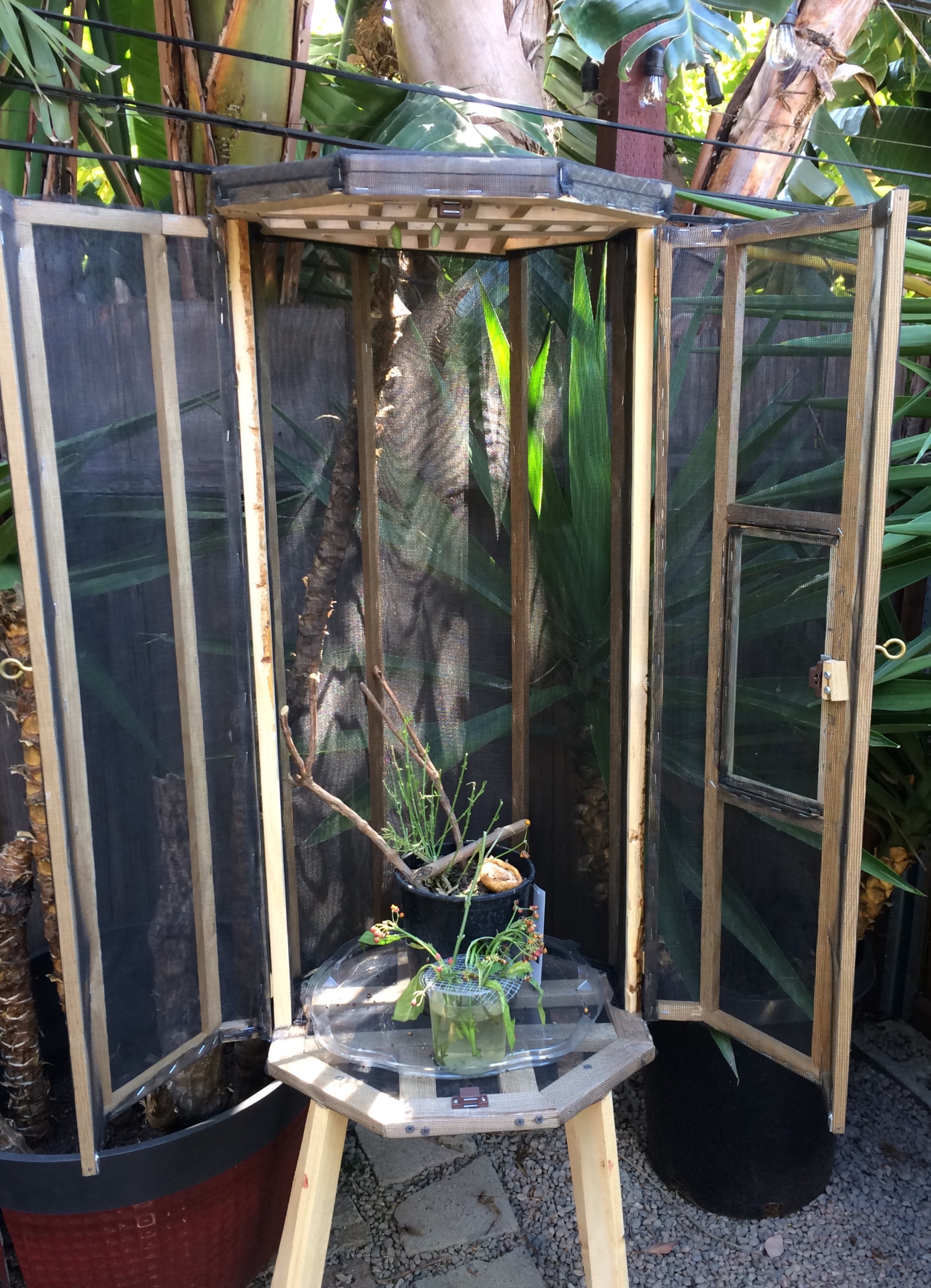
Versions #1 & #2 - Butterfly enclosure design.
NOTE: Grow Native Milkweed, host plants, and nectar flowers! Several photos show Tropical Milkweed (Asclepias curassavica). This was before I became educated on revegetation efforts for Southern California. Certain plants have historically grown in areas and other invasive plants can be destruction. Tropical milkweed becomes a problem when planted in temperate areas where it does not die back in winter causing our flying friends to stick around instead of moving on like they should. General rule, if it’s red and yellow milkweed, don’t plant it in Los Angeles.
A protozoan parasite of monarch butterflies, Ophryocystis elektroscirrha or OE for short, can travel with monarchs visiting the plants and become deposited on leaves. When caterpillars hatch and start eating the plant, they ingest the OE. High OE levels in adult monarchs have been linked to lower migration success in the eastern monarch population, as well as reductions in body mass, lifespan, mating success, and flight ability.(Xerces Society)
Grow Native California Milkweed, host plants, and nectar flowers! - Xerces Society
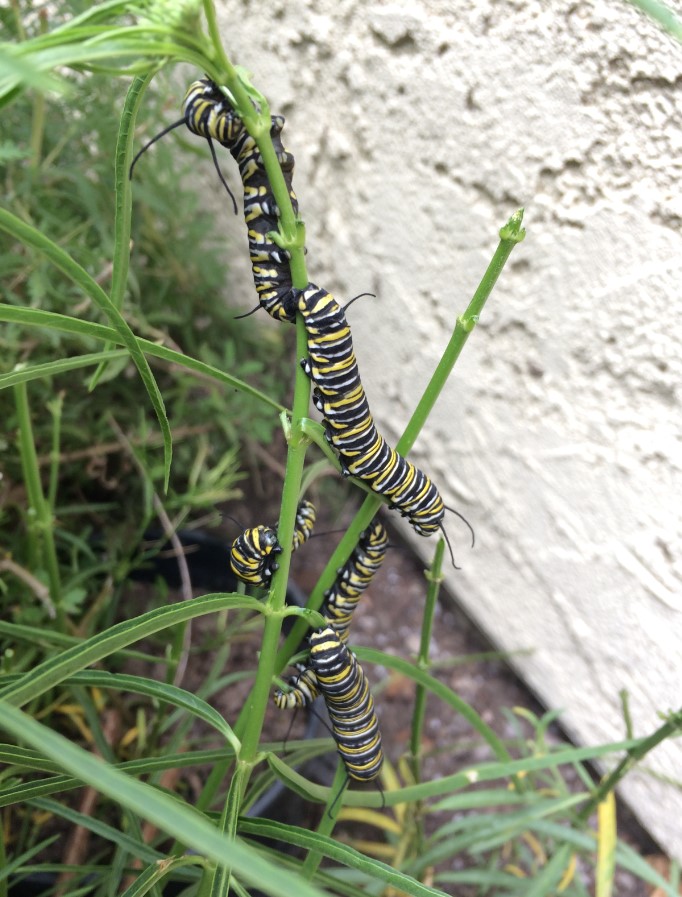
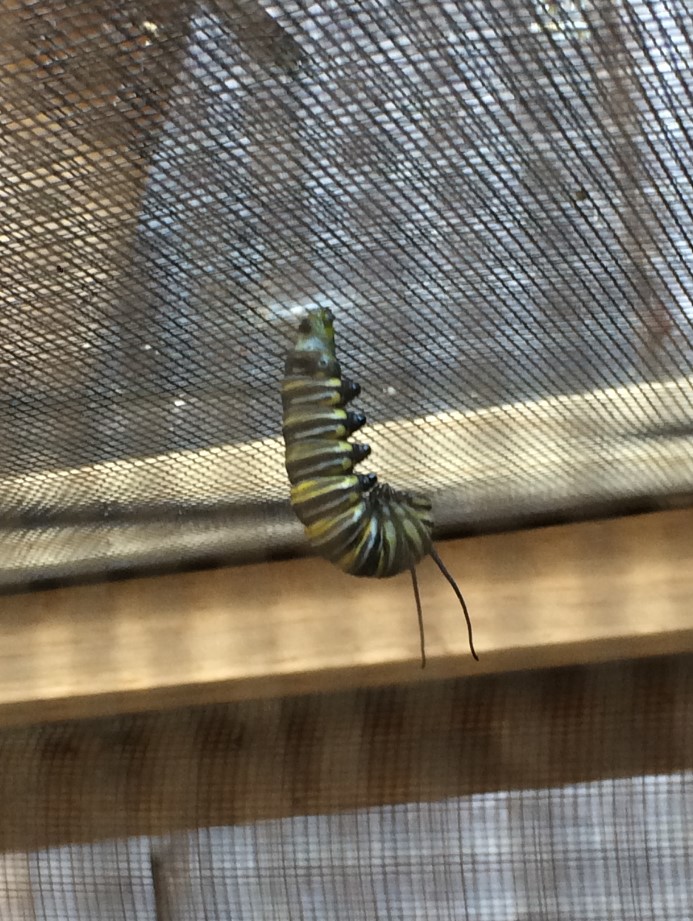
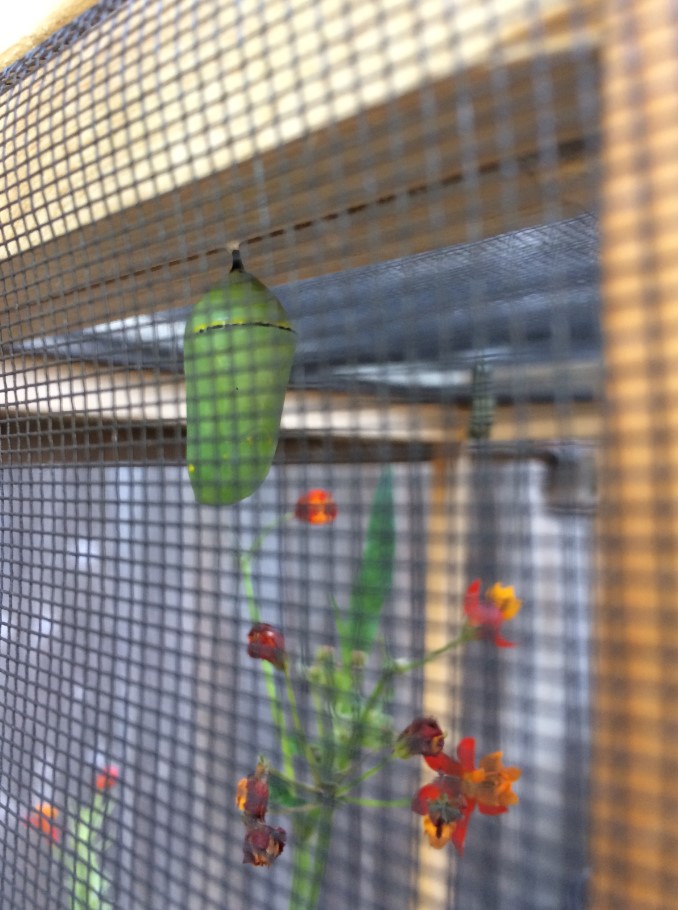
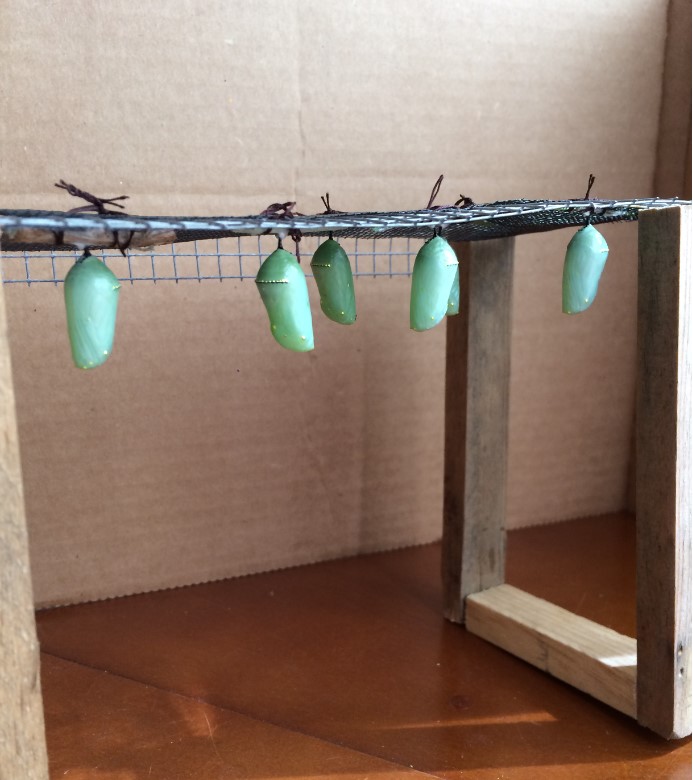
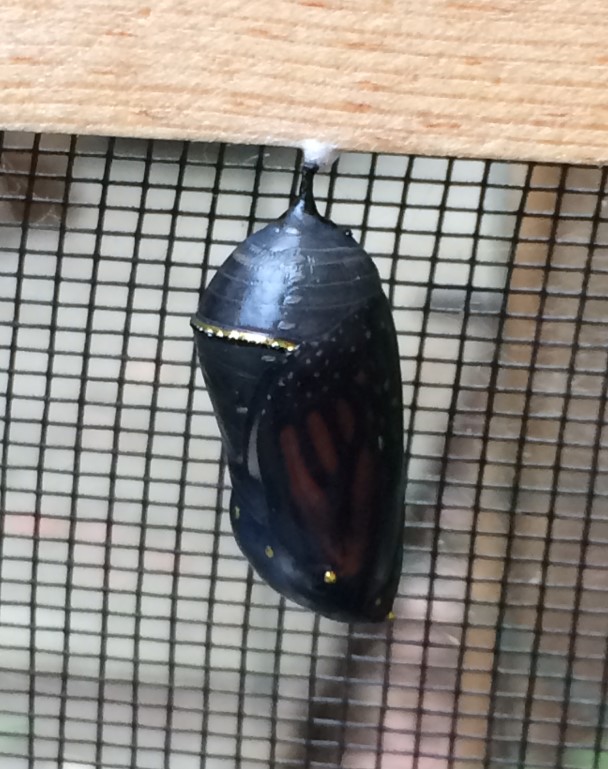
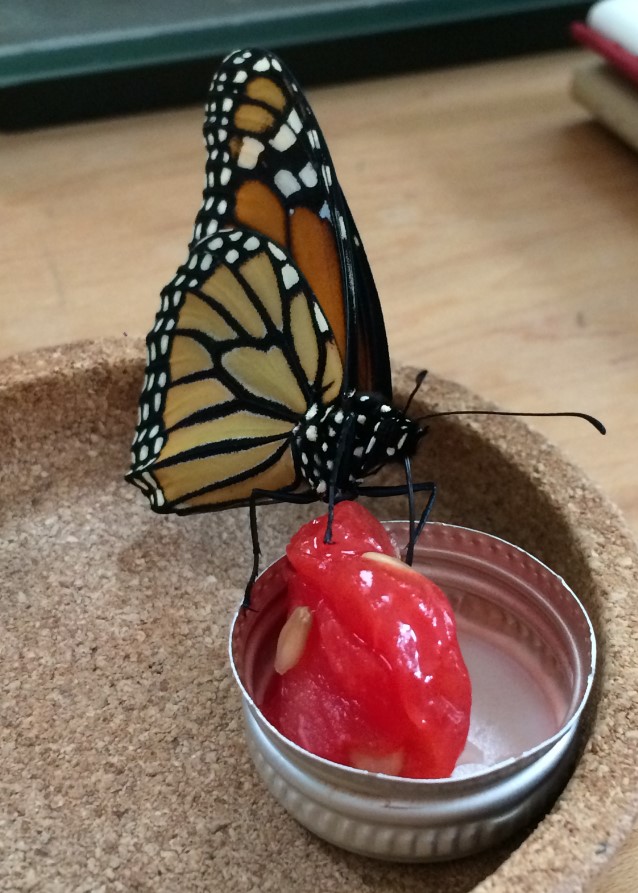
We even had a queen butterfly (Danaus gilippus) stay with us this year. As a caterpillar he ate much slower. We could tell he was different because of a third set of antennae vs. two sets like monarch. Once he emerged a butterfly, the scent glands (1x2mm black ovals) which indicate a male are visible on the top side of the wing lower quadrant.
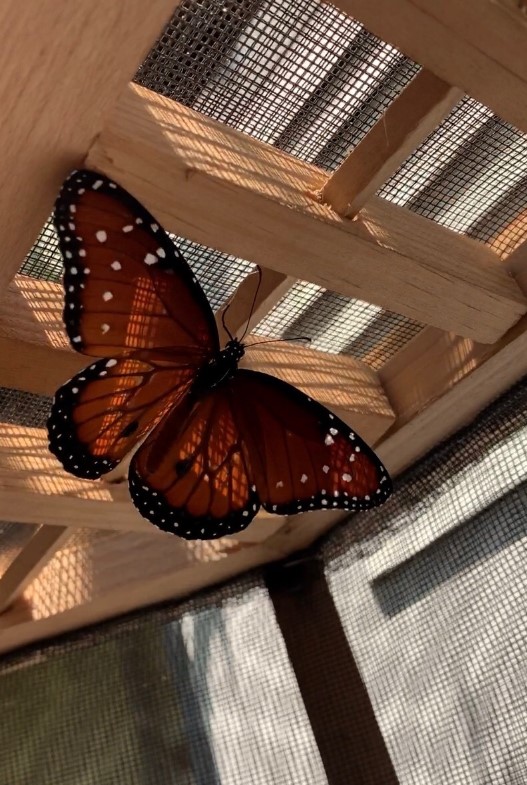
Best Management Practices for Conserving the Monarch Butterfly and its Habitat
Much of the expert advice I’ve found regarding Monarchs in the Western United States has been from the Xerces Society for Invertebrate Conservation.
Milkweed native to Southern California
Scientific Name - Common Name
Asclepias Cordifolia - Heartleaf Milkweed
Asclepias Eriocarpa - Woolypod Milkweed
Asclepias Erosa - Desert Milkweed
Asclepias Fascicularis - Narrowleaf Milkweed
Asclepias Vestita - Wooly Milkweed
Research sites backlog
https://xerces.org/monarchs
https://zoo.sandiegozoo.org/pressroom/news-releases/western-monarch-butterfly-population-all-time-low
https://www.fws.gov/savethemonarch/
https://www.fws.gov/savethemonarch/SSA.html
https://www.xerces.org/sites/default/files/2018-05/17-031_02_XercesSoc_Milkweeds-Conservation-Guide_web.pdf
https://www.xerces.org/sites/default/files/2018-05/17-040_01_ProtectingCaliforniaButterflyGroves.pdf
https://www.xerces.org/sites/default/files/2018-05/16-015_01_XercesSoc_State-of-Monarch-Overwintering-Sites-in-California_web.pdf
https://www.xerces.org/sites/default/files/2018-06/18-009_01-Monarch_BMPs_Final_Web.pdf
https://www.monarchwatch.org/waystations/